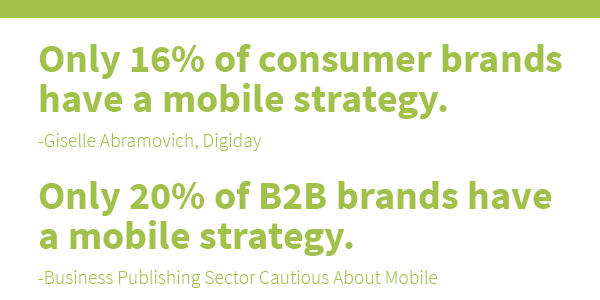Mobile was the final frontier in the access revolution. It has erased the digital divide. A mobile device is the internet for many people. -Susannah Fox, Pew Research.
Mobile is now part of the Internet. In fact, it’s a very large part of the Internet. Mobile is the Internet for many people and that fact seems to be growing in numbers.
People seem to find what works for them from their teens into the thirties. From there they pretty much get comfortable with what they know and only change when it’s absolutely required. As time goes on it becomes more of a truth.
We’ve seen this happen with computing and the Internet. More mature generations tend to use computers as they were when first introduced to the masses in the 1990s. Those over 35 years old or so use home computers and laptops. They use search. They use email. The next generation uses email as well and is more comfortable with social media. The even younger generation is attached to their phone. You don’t see a teenager without their phone today.
Many people who didn’t have internet access before can now afford to own a smartphone and access the internet. The cost of owning a phone & web browser all in one is much cheaper than investing in a laptop or desktop computer. In developing countries a mobile phone is often shared amongst a community like a pay phone. It is the only way for many people to access the Internet.
This is a closing of the so-called Digital Divide. So why are so many businesses serving up half the content of their desktop site to their mobile site? Shouldn’t they be one in the same?

It’s obvious by now that mobile is a major part of the Internet. The question now becomes how this change in Internet use will impact your business and specifically your content strategy.
Here are two important points to remember when creating content.
Don’t Treat Anyone As a Second Class Citizen
20% of Americans Have No Internet Access at All*
35% of Americans Have No Internet Access at Home*
Many people still don’t have access to the Internet either at home or at work. This means they depend on their mobile device. It’s how they communicate with people. It’s how they find information.
Now, this has a few implications on content and design, but one thing remains the same.
The type of content you create – insight, guides, advice, etc. – is unaffected by channel. People look for answers. They look for information. It doesn’t matter what device they’re using. They want to get those answers so your focus remains the same.
I like to focus on the questions people are asking. They ask these questions on search engines. They ask friends and colleagues via email and on social media. That is where your content is found. That is where your brand is found.
What does change is the ability of your target audience to find your content.
To make it easier for people to find and consume your content on their mobile device you have to make the design easy to read and you have to make the load time extremely fast.
Right now, mobile users are kind of treated like second-class citizens. They get on a website and the pages are meant for desktop consumption. There are elements all over the place. Pages load too slow and people get frustrated. After waiting for a little bit they just leave.
Content Strategy: Write Better for All Devices
Work with your designer to create an online experience that is ideal for your customer whether they’re using a desktop, tablet or smartphone. Make the site fast. Remove any element that isn’t necessary for each page.
Now, this doesn’t mean make your site different. Give the same experience on any device. Think about your site as one site. If you can remove an element for mobile you can remove it for desktop.
Focus on the entire journey a visitor goes through when they visit your site. Think about the next step. Think about what makes sense as the next step for a person reading a blog post to maybe get to your About page or signup for an email newsletter.
It’s a long process to the ultimate sale or contact.
Simplify the site. Make it fast. Make it easy to understand. That’s how you get more customers in the mobile world.
*Source: Karen McGrane, An Event Apart Seattle





